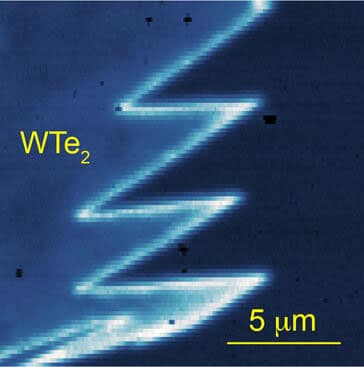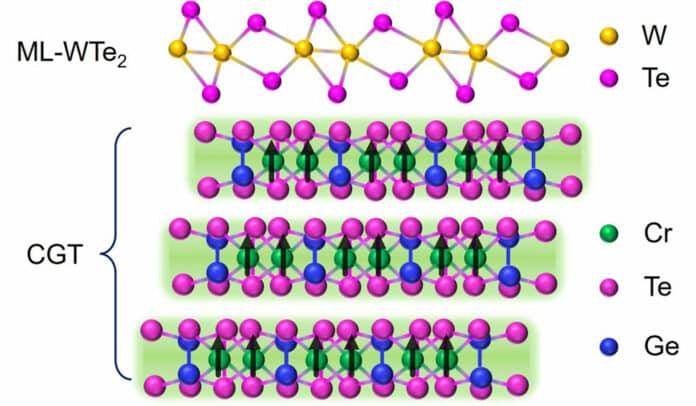Tungsten ditelluride, or WTe2, is a new quantum material, which is also known as a magnetized or ferromagnetic quantum spin Hall insulator. The material has a one-atom thickness and an insulating interior but a conducting edge, which has important implications for controlling electron flow in nanodevices. Moreover, the conducting edge has partially spin-polarized electrons.
Recently, physicists at the University of California, Riverside, have discovered a new magnetized state in a monolayer of this quantum material.
Ordinarily, monolayer WTe2 is a special insulator with a conducting edge; magnetizing it bestows more unusual properties.
Jing Shi, a distinguished professor of physics and astronomy at UCR who led the study, said, “We stacked monolayer WTe2 with an insulating ferromagnet of several atomic layer thickness—of Cr2Ge2Te6, or simply CGT—and found that the WTe2 had developed ferromagnetism with a conducting edge.”
“The edge flow of the electrons is unidirectional and can be made to switch directions using an external magnetic field.”
The size of the center of the material is irrelevant when only the edge conducts electricity, allowing electronic devices built of such materials to be made smaller—in fact, almost as small as the conducting edge. Devices might be more energy efficient since they would require less power and disperse less energy when manufactured of this material. For instance, batteries would last longer if this technology were used.

For now, the technology works only at very low temperatures. Scientists are looking forward to making the technology work at higher temperatures, allowing for many nanoelectronic applications such as non-volatile memory chips used in computers and cell phones.
Shi explains, “the conducting edge in ideal quantum spin Hall insulators comprises two narrow channels running alongside each other, akin to a two-lane highway with cars driving in opposite directions. Electrons flowing in one channel cannot cross over to the other channel, Shi said unless impurities are introduced.”
“It is two channels per edge. If you eliminate one channel, you end up with a current flowing only in one direction, leaving you with what is called a quantum anomalous Hall insulator, yet another special quantum material. Such an insulator has only one highway lane, to use the highway analogy. This insulator transports electrons in a fully spin-polarized manner.”
She said, “In the two channels of ferromagnetic quantum spin Hall insulators, we have an unequal number of electrons flowing in opposite directions resulting in a net current, which we can control with an external magnet.”
Journal Reference:
- June Li et al., Proximity-magnetized quantum spin Hall insulator: monolayer 1 T’ WTe2/Cr2Ge2Te6, Nature Communications (2022). DOI: 10.1038/s41467-022-32808-w
